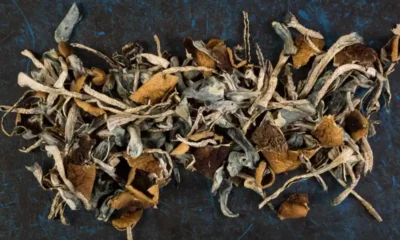Connect with us
Published
2 years agoon

Patients looking for relief from a number of conditions and symptoms have already used medical cannabis to manage their own health for some time. However, two new studies presented at the 2022 Annual Meeting of the American Academy of Orthopaedic Surgeons (AAOS) now suggest that giving patients with chronic back pain and osteoarthritis (OA) access to medical cannabis can reduce or even eliminate the use of opioids for their pain management, according to a press release.
The studies were led by Principal Investigator Asif M. Ilyas, MD, MBA, FAAOS and also demonstrated that patients’ scores on pain and quality of life improved after they were certified for medical cannabis.
The release notes that 50 million Americans suffer from chronic pain not related to cancer, and these symptoms are often treated with opioids. Though, in 2019, an estimated 10.1 million people aged 12 and older misused opioids, and opioid addiction remains at an all-time high, pointing to the need for alternative pain management methods and therapies. While medical cannabis has been researched as an opioid alternative, researchers say that further studies are needed to review efficacy, dosing, and how cannabis use can affect the use of opioids in pain management.
Dr. Ilyas, program director of the hand and upper extremity surgery fellowship at Rothman Orthopaedic Institute and professor of orthopaedic surgery at Thomas Jefferson University Hospital in Philadelphia, pointed to this need for further research into opioids alternatives:
“In the setting of the current opioid crisis, we must identify alternatives that may mitigate the reliance on opioids for controlling pain,” Ilyas said. “At this point, we are not advocating for the routine use of medical cannabis or saying it is a better option, but our studies show potential.”
The studies reviewed data of filled opioid prescriptions for patients with chronic back pain and OA who were certified for medical cannabis access between February 2018 and July 2019. The average morphine milligram equivalents (MME) per day for filled opioid prescriptions six months before medical cannabis access were compared to six months after the patients gained access.
For patients with chronic musculoskeletal, non-cancer back pain, there was a significant decrease in the overall average MME per day after a medical cannabis prescription, from 15.1 to 11.0. In addition, 38.7 percent of patients dropped to zero MME per day. Both patients who started at less than 15 MME per day and greater than 15 MME per day saw significant decreases, from 3.5 to 2.1 and 44.9 to 33.9 respectively. The percentages of patients dropping to zero MME per day in these groups were 48.5 percent and 13.5 percent, respectively.
Patients also reported improved intensity, frequency, and daily function after medical cannabis use.
For the treatment of OA, the study measured patient outcomes at three, six, and nine months following medical cannabis use. After the patients gained access to medical cannabis, the study showed that there was, similar to the chronic back pain patients, a significant decrease in the average MME per day filled by patients, from 18.2 to 9.8. The average daily MME drop was 46.3 percent, and the percentage of patients who dropped to zero MME per day was 37.5 percent. Patients’ pain scores also saw a significant decrease, from 6.6 to 5.0 and 5.4 at three and six months, respectively.
The Global Health quality of life score also saw a significant increase, from 37.5 to 41.4 at three months.
Ilyas said that the studies show that medical cannabis can be an effective treatment for both conditions and could potentially help patients to reduce their reliance on opioids.
“However, additional research is needed to better understand the best routes and frequencies, potential adverse events, and long-term outcomes of medical cannabis use,” Ilyas said. “In the interim, prescribers should use shared decision making with their patients when considering medical cannabis for chronic musculoskeletal pain conditions.”


Study Reveals State Cannabis Legalization Lowers Immigrant Deportation


DEA Challenges Bid To Use Psilocybin Under ‘Right To Try’ Legislation


Vegans Rejoice as Farmers Switch from Chickens to Hemp


Louisiana Legislative Committee Unanimously Passes Adult-Use Cannabis Framework Bill


Louisiana House Bill to Regulate Hemp Products Advances Along With Senate Bill to Ban


Cresco Labs Workers Reportedly De-Unionize
